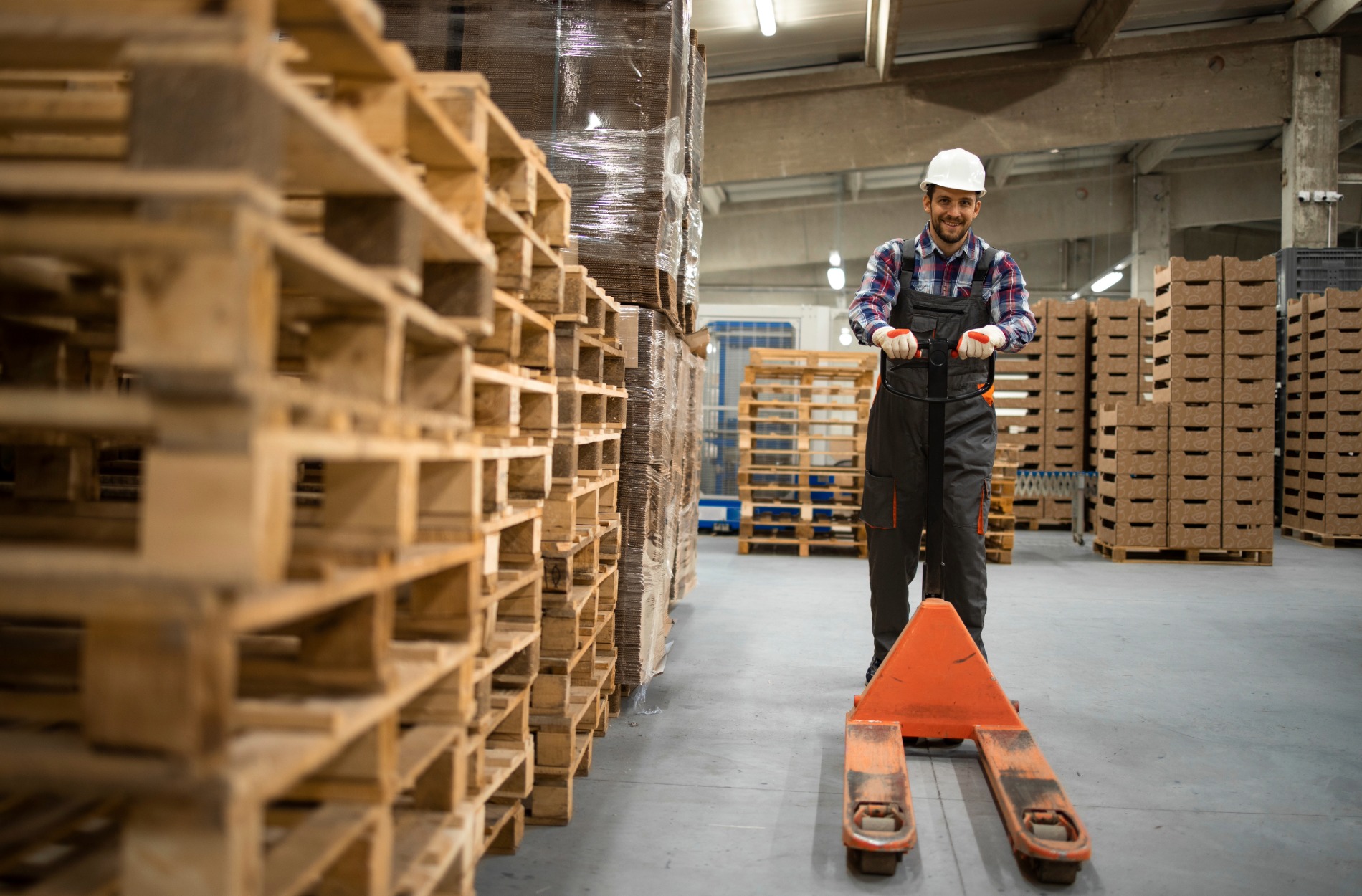As automation becomes more common in shipping and warehousing, the tools supporting those systems need to keep up. One area that’s often overlooked is pallet design. The type of pallet you use plays a bigger role than you’d think in how well your automated systems handle movement, picking, loading, and stacking. If your pallet doesn’t align well with sensors, conveyor belts, or robotic arms, you’re going to run into delays, breakdowns, or worse — product damage.
For operations in Rochester, NY, where seasonal fluctuations can already pose challenges for logistics, having the right pallet design helps reduce headaches across the board. From handling different product types to ensuring consistent flow through sorting machines, the structure and material of your pallets can either smooth out or interrupt the process. Choosing right the first time means fewer interruptions and better performance.
Understanding Automated Systems and Pallet Requirements
Automated systems come in different shapes and setups. Whether it’s a robotic arm arranging boxes on a skid or a conveyor system scanning and directing packages, every piece relies on predictable, well-aligned equipment to do its job well. That’s where pallet compatibility comes in. If your pallets are poorly built or not standardized, they can trigger errors or slowdowns that ripple through the entire chain.
A good pallet for automation needs to do more than just carry weight. It has to work with sensors and be consistent every single time. Irregular sizes or warped decks usually cause jams or trips in the process. Reliability is the goal, which often means using materials and designs that hold their shape and stay in spec over repeated uses.
When picking a pallet for automated systems, here’s what to think about:
– Flat and smooth bottom surfaces so the pallet moves easily on rollers or belts
– Uniform sizing to prevent misalignment during stacking or movement
– Strong corners and edges that help automated arms grip and lift correctly
– A material type that stands up to repeated use without warping or splintering
– Easy traceability if your system uses scanning or digital tracking
If your setup runs across multiple stages like inbound receiving, internal storage, and outbound loading, then the same pallet may need to perform well in multiple roles. That makes planning even more important. Designing pallets with automation in mind prevents issues down the road and helps each system stage function smoothly.
Types of Pallet Designs
There isn’t a one-size-fits-all pallet for automation. Different setups, goods, and goals call for different styles. While traditional options like stringer and block pallets are common, newer or custom designs are growing in popularity depending on the system they need to work with.
Here’s a breakdown of common pallet types used in automated settings:
1. Stringer Pallets
These use a frame of three or more parallel boards (called stringers) between the top and bottom decks. They’re typically cheaper and lighter, which can be a benefit in some operations. But they’re also more likely to shift or wear down faster, especially with constant machine handling.
2. Block Pallets
These are sturdier and use blocks instead of stringers, offering access from all four sides. That’s a benefit in automated systems that need to lift or rotate pallets from multiple angles. While they tend to cost more up front, they often last longer and stack more evenly, leading to a smoother process.
3. Custom Pallets
When off-the-shelf designs don’t quite cut it, some facilities turn to customized pallets. These might include special materials or configurations built to match specific conveyor sizes, load profiles, or handling tools. They cost more to produce, but if they solve repeat issues, they often save money long term.
Every pallet type has trade-offs, so what works in one facility might not be a good fit in another. Testing a few options within your system is often the best way to find out what works. Keep records of what designs perform best, where failures happen, and how changes affect flow. That hands-on knowledge will go further than guesswork or standard templates.
Benefits of a Wooden Box Pallet for Automated Systems
A wooden box pallet brings a specific kind of reliability that matches well with automation. These pallets are fully enclosed, allowing products to sit securely inside the frame. That’s a big advantage for items that might shift or fall during movement. In an automated line, where machines don’t stop to make corrections, keeping everything locked into place is a big deal.
One of the top strengths of a wooden box pallet is its resistance to wear. These units are built with long-term use in mind and can be reinforced to stand up to heavy automation cycles. You get less splintering and fewer warping issues compared to lower-grade wood pallets. That means smoother transfers and less downtime caused by a malfunction somewhere on the line.
Where they really shine is consistency. Automated systems tend to depend on set dimensions and repeatable actions. A wooden box pallet keeps its shape and offers the type of controlled loading zone that many robotic systems need. From tight stacking to easy lifting with sensors, these box-style pallets reduce chances of misreads or handling errors.
Over time, the upfront cost is often worth it. Even though the build is heavier, the protection and longer service life can balance things out. They’re especially useful when automation lines carry large or oddly shaped products that could slide around on a flat or open pallet.
Choosing the Right Pallet Design for Your Business
No two automation setups are exactly alike, which is why choosing the right pallet design takes a little planning. What works well in one warehouse might not run smoothly in another. It depends on what you’re shipping, how the system is built, and how often it runs. Trying to match a general-use pallet to a high-output automated system will probably end in delays or extra maintenance.
Here are a few things to look at before deciding what works best:
– Review the load you’re moving. Are items lightweight, heavy, or oddly shaped?
– Check your equipment specs. What size pallets fit properly across all areas of the system?
– Think about lifecycle use. Will pallets be used once, or need to last through hundreds of uses?
– Consider safety. Enclosed box pallets offer strong protection for fragile goods in motion.
– Look at how it moves. Will pallets be used on conveyors, picked by forklifts, or handled by robotic arms?
Testing different designs in small batches helps you learn what your system responds to best. You want to catch alignment issues, jamming, or sensor feedback problems before you commit to full-scale use. Many businesses start by testing a wooden box pallet side-by-side with other types so they can log any operability differences and track wear over time.
If you’re located in or shipping out of Rochester, NY, seasonal humidity and temperature shifts can also impact how pallets behave. Solid wood with tighter joints, as used in a wooden box pallet, tends to perform better in those conditions, showing less change in shape and structure during hot or damp weather.
How to Find the Best Fit for Your Automation Goals
Designing warehouse systems that run smoothly starts with what’s at the base, and your pallet selection can save time, protect products, and steady your whole operation. Not every pallet will meet the demands of automation, and that’s okay. The goal is to pick the one that suits your system, your product, and your level of use.
Choosing the right pallet means fewer issues with sensors, less slip in movement, and smoother handling from start to finish. For businesses looking to scale their systems or reduce downtime in automated lines, it’s one small change that can make a big difference.
Once you identify the pallet type that matches your equipment and handling needs, start to build standard use into your workflows. Track how the pallets operate, how long they last, and if any maintenance or adjustment is needed based on seasonal conditions in Rochester. Getting consistent results starts by making smart choices early on and sticking with what works as you grow.
If you’re looking to reduce handling errors and improve automation efficiency, using the right support tools can make a big difference. Discover how a wooden box pallet can streamline your operations and deliver greater consistency across your systems. Orcon Industries is here to help with pallet solutions built for long-lasting performance.




